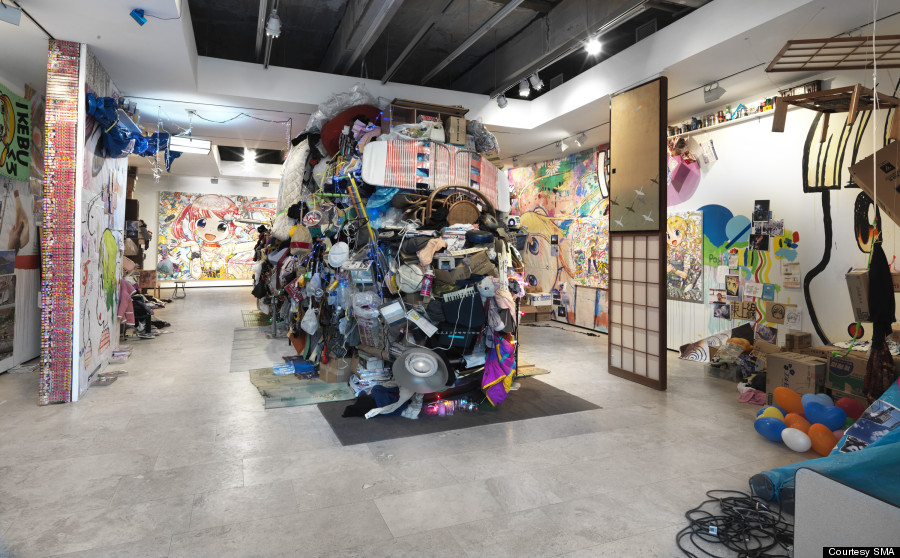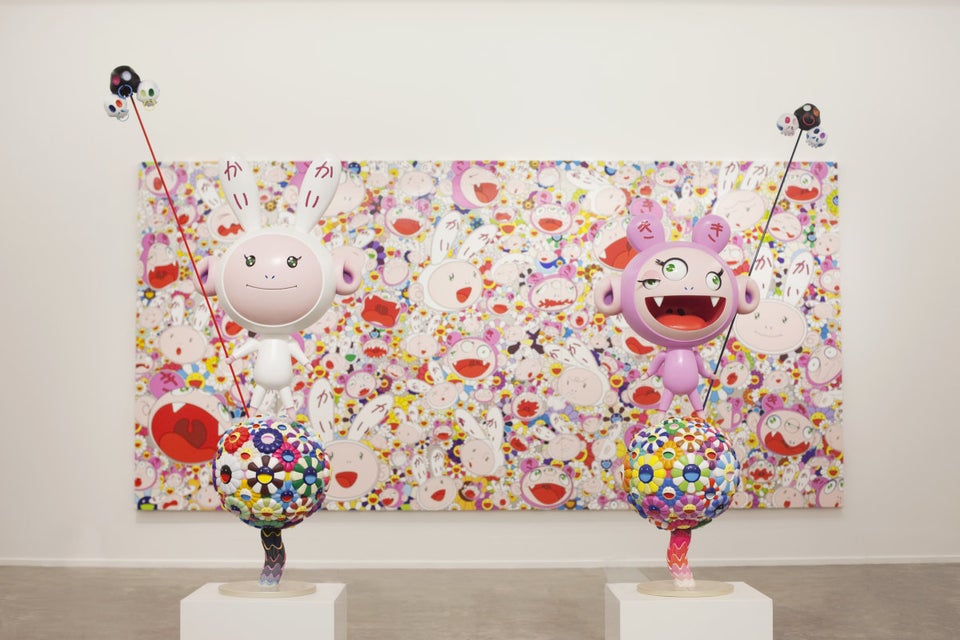The work of Japanese artist Mr. will mess with your head. It's bright and intoxicating, but like the otaku subculture Mr. is inspired by, dark forces pulse just beneath the gloss.

One of the last big Mr. shows in America was in 2007. Then, sexual deviance was the primary undercurrent, most memorably displayed in a painting of two schoolgirls -- or a pair who look like girls, except for the fact that one is pulling the other's skirt up to reveal a penis.

The artist Mr. in his studio.
He's since moved onto broader anxieties. A new show at the Seattle Art Museum encompasses 15 years of Mr.'s work and reveals angst not only of the sexual kind, but environmental as well. Like his mentor Takashi Murakami, Mr. has begun to use recent natural disasters as portals into the psyche of the Japanese populace. Unlike Murakami, he has never before exhibited solo in a museum in the United States. Visitors to the show, "Live On: Mr.'s Japanese Neo-Pop", can expect to marinate in his particular stew of neurosis and cheer.
His aim, he insists, is to represent Japanese pop culture at its truest. Speaking to HuffPost through a translator by phone, Mr. -- the name comes from a Japanese baseball player with whom he felt a kindred eccentricity -- was adamant about the simplicity of his endeavor, saying he has no expectations for the show beyond inspiring a "respect for a certain brand of Japanese creativity and craftsmanship."

At the show's heart is what curator SAM curator Xiaojin Wu calls an "overwhelming" ode to that brand. Called "Give Me Your Wings," it is a giant, caterpillar-shaped structure made of trash flown in from Japan. From an art historical view, it recalls the recycling ethos of the midcentury Italian art movement Arte Povera. Mr., who singles out Alberto Burri as his favorite of the movement's luminaries, sees parallels between the "two countries defeated in World War II." For both Italy and Japan, the loss of the war could be tracked in the items their populaces subsequently used and discarded, as the need arose to get by with second rate goods.
The proliferation of these cheap household items and the circumstances propelling their arrival turned junkyards into archeological sites. What could be thought of as litter became artifacts, reminders of how rapidly fortunes can change. Today, heaping such items together also calls to mind a fresher tragedy: the tsunami and earthquake of 2011. As the museum's website notes, debris enveloped the Tohoku region after the destruction. To deliberately mass Japanese trash together is to invoke the "post-disaster fear and frustration" that rippled out when everything came tumbling down.


By the tenets of today's pop psychology, even the chirpiest of Mr.'s anime concoctions speak to a post-traumatic reaction in his country. This phenomenon was recently unpacked by Mr.'s former teacher, Murakami, in the program notes for Murakami's ongoing show at the Gagosian Gallery in Manhattan. Explaining his fascination with the psychology underpinning otaku culture, he posits that "people require a narrative in one form or another -- whether it be religion or sci-fi -- in order to cope with living on in the face of such a massive loss and sense of helplessness."


Of course, Mr. is less philosophical about his motivations. If he had to convey a message to viewers, he says, it would be a simple one: "This is Japanese pop."
All images courtesy the Seattle Art Museum.
